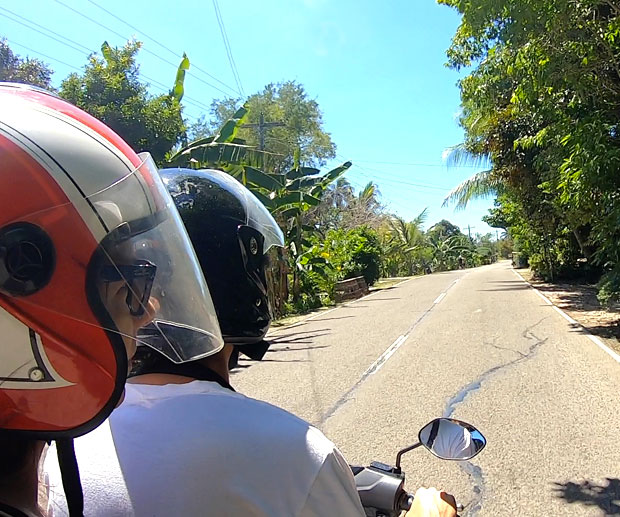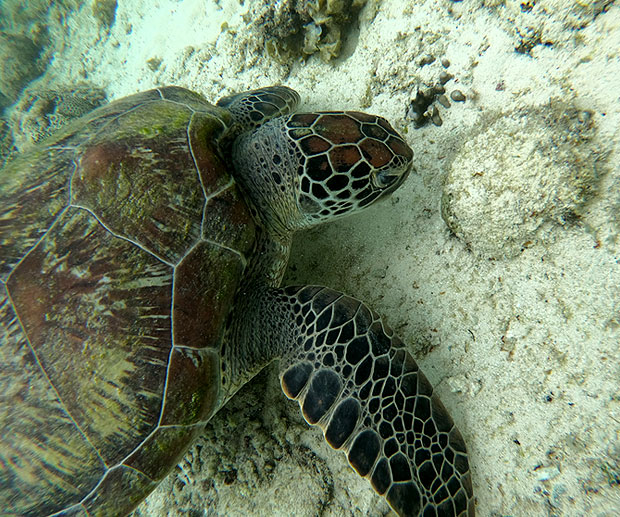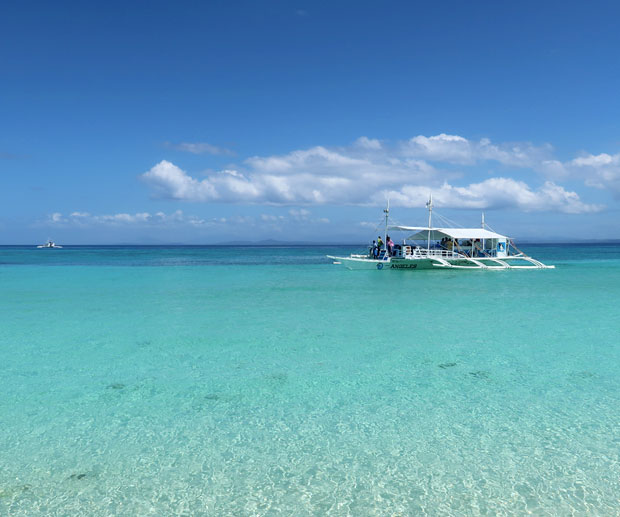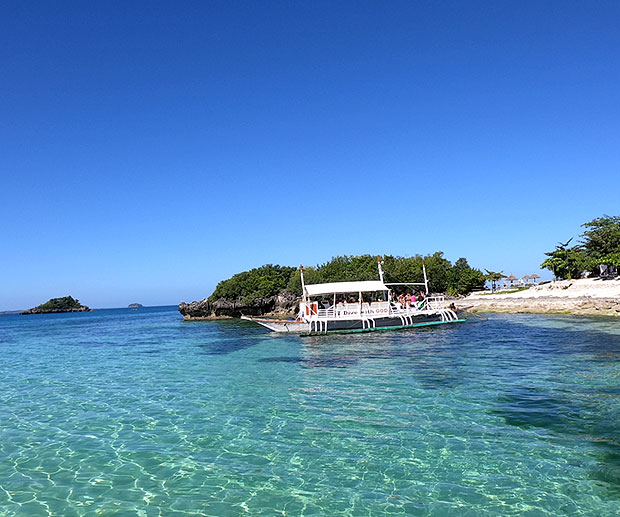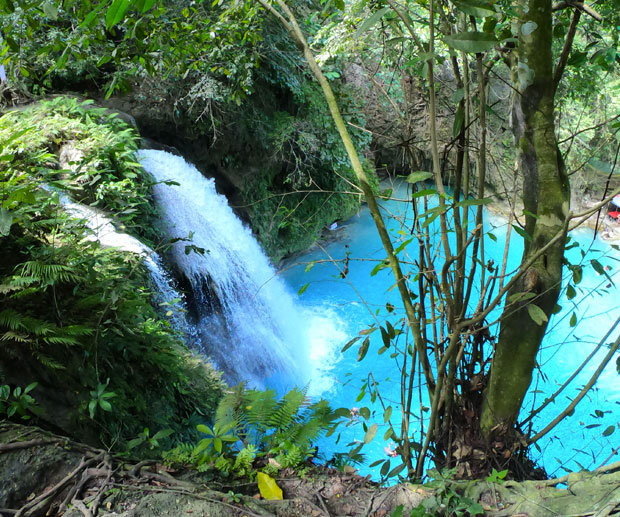After so many years I managed to realize the dream of going to the Philippines, a country still little beaten by mass tourism but full of wonderful places: paradisiacal beaches, some of the most beautiful islands in the world and many things to do.
Precisely for this reason, in recent times it has become a particularly popular destination for those looking for an uncontaminated place to be discovered.
Since there is still not much information on this wonderful archipelago, in this article I have collected all the tips for organizing a DIY trip to the Philippines.
Before leaving for the Philippines it is important to know every aspect of the country, even if only to understand if it is the right destination for your holidays.
It was not easy to find the information on the web, I had to read a lot of discussions on the forums and also consult several guides and blogs in English.
In the end, however, I organized a beautiful trip, I chose the right time to appreciate the country even more and I identified which islands could be the best for me.
In this travel guide to the Philippines I share with you, based on my experience, all the practical information for plan your trip and enjoy your stay in complete safety.
We will see when to go to the Philippines, where they are, how to get around, where to stay, which island to choose, what to do and see in the Philippines, how to create the travel itinerary, etc.
In short, a super complete guide that will allow you to plan the perfect holiday in the Philippines, without wasting time in a thousand readings.
Diy Travel Tips Philippines
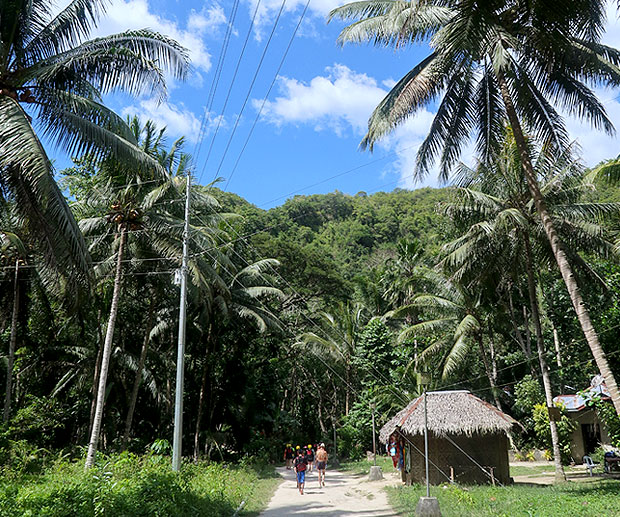
Philippines where they are located
The Philippines is an archipelago located in the Pacific Ocean between the island of Taiwan and Indonesia.
How to reach the Philippines? Philippines airports
The Philippines can only be reached by plane. The main airports and entry points into the country are Manila e Cebu City. There are currently no direct flights to the Philippines and the journey time is generally around 15 hours.
However, the Philippines are connected with low cost flights that depart from several cities in Southeast Asia. For example a very popular solution is to do one stopover in Hong Kong, visit the city and, after a few days, reach the Philippine archipelago by direct flight.
How many days to stay in the Philippines
An archipelago made up of many islands certainly requires some time, even if it will not be possible to visit it all.
How much time to spend on a trip to the Philippines depends on what you want to do and see.
However, considering the many hours of flight, at least 15 hours, I recommend a minimum of 2 weeks to amortize the trip and enjoy the country as much as possible.
If you have fewer days and you really don't want to give up a trip to the Philippines, you need to limit your movements and visit a maximum of 2 islands. Even better you could dedicate yourself to just one, for example Palawan.
Keep in mind that in the Philippines, travel is quite complex and services are not always efficient.
Philippines when to go
A question that all tourists who decide to reach the country ask themselves is the best time to go to the Philippines. Let's try to shed some light on the situation.
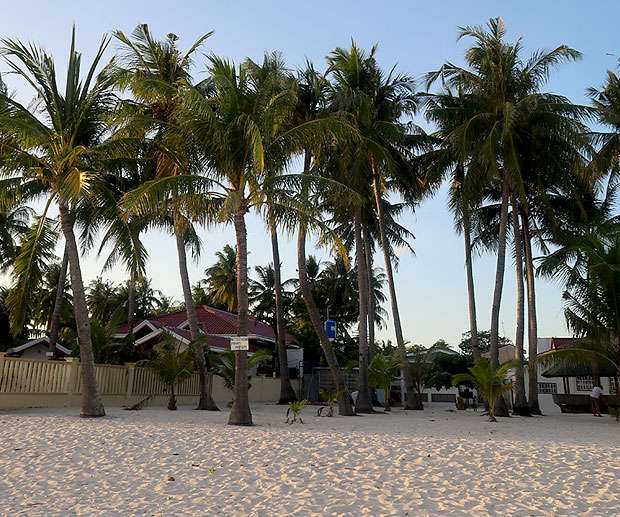
The climate of the Philippines is tropical with average temperatures of 27 ° C and characterized by a humid season from May to October and a dry season from November to April.
The Philippine archipelago during the wet season is often prone to typhoons and tropical storms, especially between June and October.
In reality, as everywhere in the world, the climate in the Philippines is changing and is increasingly unpredictable. Indeed in recent years even the months of December and January, contrary to what is said, are subject to rains and are at risk.
Therefore, the best time to visit the Philippines is certainly between mid-February and April.
So is it really impossible to visit the Philippines during the rainy season? It always rains?
It does not mean that it always rains and it is possible to visit the archipelago even in this period, but you must be aware that it can rain a lot and that you are at risk of typhoons, but it could also happen that you find sunny days and little rain.
If you really have no other possibilities, you can also leave, the important thing is to know what the situation may be.
If you travel during the wet season, I advise you to always monitor the weather situation and create a flexible itinerary, which allows you to change during the race and in case of storms move to other areas.
Philippine time zone
The Philippines are 7 hours ahead of Spain. So if in Spain it is 13,00 in the Philippines it will be 20,00
However, it must be borne in mind that the Philippines does not use daylight saving time. So when daylight saving time is in force in Spain, the difference is +6 hours.
Exchange or ATM: How to pay in the Philippines?
The official currency of the Philippines is the Philippine Peso (PHP).
Another doubt that plagues most of the tourists who are preparing to organize a trip to the Philippines, concerns the management of money: exchange or withdrawal at ATMs.
Exchange offices are located in the main tourist resorts of the Asian archipelago. A good solution would be to leave with a sufficient amount of euros in cash and exchange them on the spot.
However, it must be said that in certain islands the exchange rate can be very unfavorable, so it is preferable to exchange euros in large cities, such as Manila or Cebu City.
The best thing is to change directly in Manila, if you make a stopover in the Philippine capital, the change here is usually the best. Unlike other countries, you can also change at the airport and the change will certainly be more favorable than in other places, such as Palawan or Coron, or compared to smaller islands.
As an alternative to the exchange there is the possibility to withdraw the local currency at the ATMs. However, some considerations need to be made:
- Philippine banks have one commission of about 4 euros for each withdrawal. Most banks allow you to withdraw a maximum of 10.000 pesos, around € 170. Only some subsidiaries, such as HSBC, have a maximum limit of 40.000 Peso.
- In addition to the Philippine bank tax, you also need to consider the possible commission from your bank.
- Apart from the big cities, it is not always easy to find working ATMs that accept all international cards. They are usually present in the most famous islands, but there may be only one and with little availability.
I recommend using the official ATMs of the banks, they are the safest ones.
Payments by credit card are generally not convenient, often the fees applied can be up to 10%.
The best thing as I always suggest is to have more alternatives, cash and ATMs, even better if from different circuits.
Internet in the Philippines
The two main telephone companies in the Philippines are Smart and Globe. You can buy the Sim Card directly at Manila or Cebu airport. The costs are quite similar. Reading the various reviews, I decided to buy an internet-only Sim Card Globe with 8 gigs for 15 days.
Calculating that in general the connection in the Philippines is not the best, I found myself quite well.
I used it mainly to call with WhatsApp, to manage social networks and for e-mail.
In larger cities, internet coverage is better and 4g is available. The wifi connection is also not very fast and not always working.
Important: remember that if you decide to buy a local Sim Card, your phone must be "unlocked", ie its use must not be tied to a specific operator.
vaccinations
To enter the Philippines there are no mandatory vaccinations, except for Yellow Fever for all those arriving from countries at risk of transmission or who have passed through an airport in that country.
Some areas of the country are particularly at risk of malaria, in particular the whole southern area of Palawan, let's say under Puerto Princesa, and some islands of Mindanao.
In any case, I recommend that you inquire at the “ASL Travelers” offices or ask your doctor to find out which vaccinations are recommended.
I also suggest you start with good health insurance: See Columbus.
Philippines entry visa
To enter the Philippines it is not necessary to obtain a visa for tourist stays of up to 30 days and there are no taxes to be paid upon leaving the country.
Important: however, you must have a return flight or in any case a flight that certifies leaving the country within 30 days. Otherwise you will be denied boarding and will not be able to leave.
ALSO READ: Leaving with one way flight
Where to Stay in the Philippines
When planning the itinerary it is important to choose the best facilities to stay in. Especially if you leave during the high season, I recommend that you select the accommodations in advance, you risk not finding the best hotels with excellent value for money.
The ideal thing would be to book the structures with flexible cancellation policies, so that you can change your itinerary during the course. If you rely on sites like booking, you can generally pay directly by card without adding commissions, so as to avoid carrying too much cash.
Travel to the Philippines
Travel is perhaps the most delicate issue, in fact it is not very easy to move between the various islands and possible delays and waste of time must be taken into consideration.
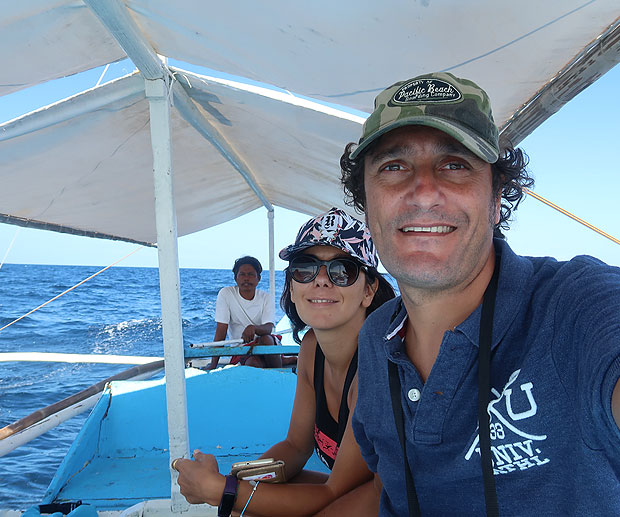
So let's see how to move in the Philippines, between the various islands and in the islands themselves.
To visit the Philippines and move from one island to another there are 2 solutions: plane or ferry.
Voli: the main companies that connect the islands of the archipelago are Air Asia, Cebu Pacific e Philippines Airlines. Getting around the Philippines by plane is not that expensive and is the best solution for longer trips and if you have little time available.
Especially if you have to take two flights in one day, keep in mind that there can often be delays or cancellations, especially with Cebu Pacific.
I had read several reviews of people complaining about the continuous delays, unfortunately I can confirm it, the only flight I took with Cebu was late and I missed the next one. Fortunately I had bought a single ticket and they re-protected me on the next flight. In my opinion Air Asia is more efficient and in fact I used it for the other flights.
Consider that for low cost flights the standard rate generally does not include checked baggage, so you will have to add the cost of baggage when booking.
Important: if you have to move to Manila from Terminal 1 (international flights) to Terminal 4 and you are on a tight schedule, you should take a taxi. The shuttle bus "should" pass every 15 minutes, in reality due to the intense traffic the service is not really reliable and you risk missing your flight.
Ferries: they are the best solution to move between the various islands for not too long distances. It is possible to buy tickets at agencies or as we did directly at the port. Keep in mind that for some trips (Cebu-Bantayan) it is possible to buy the bus + ferry ticket. It is a very convenient solution because you can leave your luggage directly on the bus that goes directly onto the ship.
To move around the islands there are several solutions:
Bus: it is obviously the cheapest solution to cover medium-long journeys. The main company is there Ceres Bus. I recommend taking the air-conditioned buses, the price is almost the same. As I said before, to move from one island to another, buses are boarded on the ferry.
Taxi or Private Car: it is certainly the most comfortable option to travel several kilometers especially if you have little time available or if you come from a long international trip.
But it is also the most expensive way, for example to travel from Cebu airport to Moalboal calculate about 3.000 pesos (€ 50,00). Taxis can also be convenient for short trips to large cities, but make sure the meter is turned on.
Alternatively, you can always rent a car, to be more independent with your travels.
Tricycle: they are practically the Filipino tuk tuks and are the best way for short trips in small towns or for example to go from the port to the accommodation.
Jeepney: they are nothing more than the characteristic and colorful mini buses, very cheap for getting around small towns or urban areas.
Scooter: is the medium that I preferred. Ideal for touring the islands independently and for visiting the most beautiful beaches and various attractions. In the main islands there are several renters, I usually prefer to rely on the hotels where I stay, the price is roughly the same.
You can also rent a scooter with driver (taxi-scooter), a service widely used in smaller islands, such as Malapascua, where you can easily get lost.
Travel philippines what to see
The Philippines is an archipelago made up of more than 7.000 islands. The main attraction are the beautiful islands and tropical beaches. But the Philippines also offers many nature excursions and national parks.
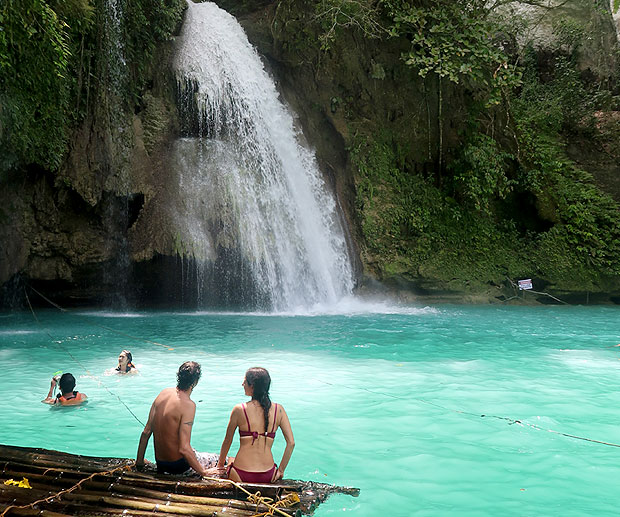
Let's see below some of the unmissable things of the Philippines:
- Palawan and the Puerto Princesa subterranean river
- El Nido
- Coron
- Borocay
- The Choccolate Hills of the island of Bohol
- The shrine of the Tarsier in Bohol
- The terraced rice fields of Banaue in northern Luzon
- The city of Vigan
- The many waterfalls, for example the Kawasan Falls of Cebu
Philippine travel what to do
There are so many activities that you can practice in the Philippines: diving, snorkeling, surfing, trekking, skydiving, relaxing on the beach, magical rituals, admiring the sunsets, sleeping on deserted islands, etc.
Obviously each island specializes in a certain activity, and it is therefore important to know the characteristics of each place.
Where to go Philippines: which island to choose
Once you know what each island offers, it will be easier to choose the one that's right for you. If you love diving Malapascua gives you the chance to spot the thresher shark; Siargao is the surfers' island; Palawan is ideal for those who love hiking in nature among the wonderful islets; Siquijor is the magical island.
In short, there is something for all tastes. To choose the island that best suits your needs, you can read the article: where to go in the Philippines, in which, based on my experience, I will explain how to choose the stages of your holiday in the Philippine archipelago.
Philippines itinerary
Now you have all the information you need to create the perfect itinerary, how to get around, when to go and which island to choose. As you have seen, travel is perhaps the weak point of the Philippines, travel times can often be long.
For this reason I advise you not to exaggerate with the stops and above all to focus on certain areas: Cebu and its surroundings, Palawan and Coron or the Luzon region.
It certainly depends on how many days you have available. For example with about 2 weeks I would not do more than 4 islands.
Cost of living in the Philippines
Apart from the cost of the plane ticket which is the biggest expense (on average from 350 to 1.000 €), the Philippines are not too expensive. The accommodation prices are quite cheap and even for food you don't spend a lot of money.
Transport, as we have seen, varies according to the vehicle, I found private cars rather expensive, but the buses are very cheap.
Keep in mind that in the Philippines you will pay some sort of tax almost everywhere: to access some beaches, for parks, for natural attractions or for parking lots. However, these are very low figures.
Security in the Philippines
Security is a sensitive issue. Many think that the Philippines are dangerous, perhaps this is also why they are not yet developed in tourism, such as Thailand for example.
As far as I am concerned, in the islands where I have been (Cebu, Malapascua and Bantayan) I have never felt in danger. I also happened to shoot in dark areas at night, but I always felt calm. Indeed, walking in the local villages I have always found friendly people, ready to share their food or a cold beer with me.
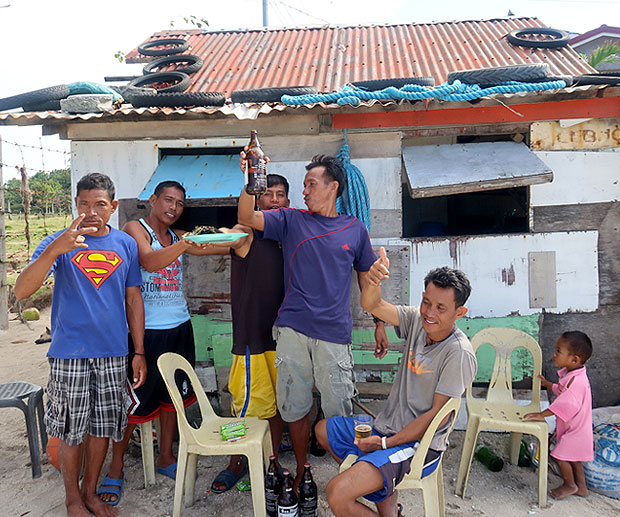
It should also be said that although petty crime is present, the laws in the Philippines are very strict and tourists are fairly protected.
As in all countries, however, it is advisable to have the common sense not to put yourself in situations that can be dangerous and always pay attention, especially if you are traveling alone.
However, there are some areas that are more at risk, in particular some areas of the city of Manila and the islands of the Mindanao region, where there have been episodes of terrorism and there are frequent religious clashes.
For a safety discourse, possible tropical storms and typhoons must also be taken into consideration. Find out about the climatic situation of the country and always keep an eye on the weather even during the trip.
Conclusions
In this guide I have tried to include every aspect to consider when planning a DIY trip to the Philippines.
I am sure I have offered you a broad and varied picture of these wonderful places now it's your turn. However, if you still have doubts, comment on the article or write me in private.
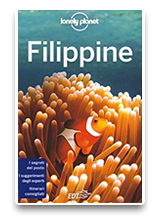
Tips, information, itineraries and maps to plan a trip to the Philippines
Don't leave without Lonely Planet!




